Death and Funeral Customs
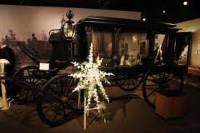
Death and Funeral Customs: Judaism
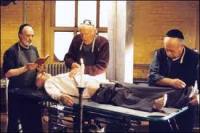
The burial (Kevura) often takes place immediately after death, as required by The Torah. This will often result in the burial taking place on the same day as death, or immediately the next day, if this is not possible. Some Reform and other jewish congregations may delay the burial to allow more time for grieving family members to attend the funeral and participate in other post burial rituals.
In Israel, the Jewish funeral service will usually commence at the burial ground. In the US and Canada, the funeral service will usually begin at a funeral home, synagogue or temple, with the mourners and their entourage proceeding to a Jewish cemetery for the burial. In the case of a more prominent person, such as a Rabbi, Rebbe or Rosh Yeshiva, the entire service with eulogies can be held at the synagogue or the yeshiva that the deceased was affiliated with.
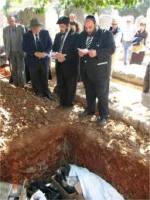
Typically, when the burial service has ended, mourners proceed to fill the grave. Symbolically, this provides closure as they observe the grave being filled. One custom is for each person present, to use spade or shovel and throw three shovelfuls of dirt into the grave. As each person uses the shovel, they place it back in the ground, rather than hand it to the next person, in order to not pass along their grief. While the grave is being filled in, some may throw in a handful of earth from Israel on the body.
Mourners of the Jewish faith traditionally make a tear (keriah) in an outer garment either before the funeral or immediately after the service. For parents, this tear is located on the left side (over the heart and clearly visible) and for siblings, children and spouses, on the right side (but does not have to be visible). In many communities, the large mirrors in the homes of the mourners' are covered. Mourners are expected to follow the traditions related to hygiene, meals, and clothing during each stage mourning. Each stage of mourning is associated with a period of time. Activities affected includes such things as not bathing or showering, not wearing jewelry and certain items of clothing, attendance at weddings or bar mitzvahs and upholding annual commemorative traditions.
Specific details on Jewish death and funeral customs, as well as views on organ donation, cremation, suicide, death of Apostalate Jews and infants can be found here.
Source: Bereavement in Judaism
Death and Funeral Customs: Buddhism
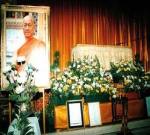
Specific details on Buddhism death and funeral customs, as well as Theravada and Tibetan views can be found here.
Source: Funeral (Buddhism)
Death and Funeral Customs: Hindu Funerals
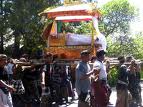
- The rituals and rites performed while a person is dying;
- Rites which accompany the disposal of the body;
- Rites that enable the soul to transit from the stage of a ghost (preta) to the realm of the ancestors, the Pitrs;
- Rites performed in honor of the Pitrs.
The rites generally last for 10 or 11 days, at the end of which the preta is believed to join the abode of the ancestors. Thereafter, they are worshipped during the 'sraddha' ceremonies.
In Hinduism, cremation is the primary mode of body disposal. Taken from the belief that the soul could not enter a new body until its former one had totally disappeared, cremation was considered the fastest way to expeditiously dispose of the body.
Specific details on a what occurs during a Hindu death and funeral can be found here.
Source: Antyesti
Death and Funeral Customs: Islam
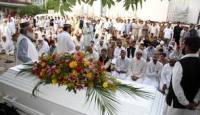
Specific details on a Islamic death and funeral customs, as well as directives govern mourning and the expected role of Muslim widows can be found here.
Source: Islamic Funeral
Death and Funeral Customs: Sikhism
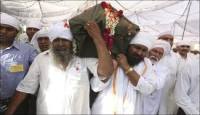
However, by contrast, the soul itself is not subject to the cycle of birth and death. Death is only the progression of the soul on its journey from God, through the created universe and back to God again. In life, a Sikh always tries to constantly remember death so that he or she may be sufficiently prayerful, detached and righteous to break the cycle of birth and death and return to God.
The public display of grief at the funeral (Antam Sanskar), such as wailing or crying out loud is discouraged and is kept to a minimum. Cremation is the preferred method of disposal, although if this is not possible any other methods such as burial or submergence at sea are acceptable forms of body disposal.
On the day of the cremation service, the body is taken to the Gurdwara or home where Hymns (Shabads) from the Guru Granth Sahib (the Sikh Scriptures) are recited by the congregation. The goal of hymns is to provide feelings of consolation and courage to the family. Kirtan may also be performed by Ragis while the relatives of the deceased recite "Waheguru" sitting near the coffin. At the conclusion of the service, an Ardas is recited and the coffin proceeds to be taken to the cremation site.
Prior to cremation, a few more Shabads may be sung and final speeches made about the deceased. Then the Kirtan Sohila (night time prayer) is recited and the Ardas ("Antim Ardas" or "Final Prayer") is offered. Thereafter, the eldest son or a close relative will begin the cremation process by either lighting a fire or pressing a button. The Sikhism funeral service usually lasts between 30 and 60 minutes. After the body is cremated, the ashes are collected and disposed by immersement in the nearest river. In some instances, an optional service may follow the cremation service. This service is held at the Gurdwara, the Sikh place of worship, and is referred to as the Sahaj Paath Bhog Ceremony.
Source: Sikhism Funeral
Death and Funeral Customs: Japanese
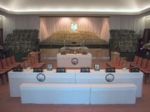
Many funeral services are carried out in the form of Buddhist ceremonies. After a person has died, their lips are moistened with water, in a ceremony referred to as Matsugo-no-mizu ("Water of the last moment"). The household shrine is closed and covered with a white paper, to keep out impure spirits. This process is known as Kamidana-fuji. A small table placed beside the deceased's bed is also decorated with flowers, incense, and a candle. A knife may also be used (placed on the chest of the deceased) to drive away evil spirits.
Funeral arrangements are made according to the day that is best and in preparation, the body is washed and the orifices are blocked with cotton or gauze. The funeral clothing will consist of either a suit for a male or a kimono if the deceased is a female. Makeup may also be applied in order to improve the appearance of the body. After being clothed, the body is put on dry ice and placed inside the casket with the head positioned towards the north or west, along with a white kimono, sandals and six coins for the crossing of the River of three hells. Items which the deceased was fond of will also be placed inside the casket as well, so long as they are flammable (e.g., cigarettes, candy). The casket is then placed on the altar in preparation of the wake.
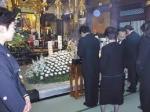
Japanese funerals are usually performed on the day following the wake. The funeral service is similar to that of the wake service, the difference being that during the funeral service, the deceased will receive a new Buddhist name (kaimyō) to prevent the return of the deceased if their name is called. At the end of the ceremony, flowers may be placed inside the casket before it is sealed and carried to an elaborately decorated hearse where it is transported to the crematorium. In some regions of Japan, the casket may be nailed shut by mourners using a stone.
Once the casket has arrived at the crematorium, the family witnesses the sliding of the body into the cremation chamber, then leave. After the cremation process is complete, the family returns to pick the bones out of the ashes and transfer them to an urn using chopsticks. In some instances, two family members will hold the same bone at the same time with their chopsticks or pass the bones from chopsticks to chopsticks. According to Japanese custom, this is the only time when it is proper for two people to hold the same item at the same time with chopsticks. The bones are picked up and transferred to the urn in a manner which ensures that the deceased is not placed upside down in the urn. Therefore the bones of the feet are picked up first, the bones of the head last.
In some cases, the ashes of the deceased will be divided between more than one urn for transporting to different locations Depending upon the local custom, the urn may stay at home of the deceased for a specific number of days before being transported, or be transported directly to the grave site.
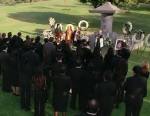
More information on Japanese death and funeral customs can be found here.
Source: Japanese Funeral
Death and Funeral Customs: North America and Canada
Within major parts of the US and Canada, the funeral ritual can be divided into the following areas:
- The Wake, Visitation or Viewing
- The Funeral Service
- The Burial Service
- Private Services
The Wake, Visitation or Viewing

After learning of the death, guests usually pay their respects at the home of the family members and at the funeral home during the wake. There is usually a guest book which is signed by everyone who attends so that family members may send thank you cards at a later date. Viewers attending the service have a choice of whether or not to view the body in the casket. Also, family members can decide to have the casket remain closed, and instead display photographs, prized possessions or any other items belonging to the deceased.
Friends of the deceased and other family members frequently send flowers and cards to the funeral home for the viewing service. Friends and loved ones are also welcome to stand and speak about the deceased as a way of honoring them. Thereafter, a prayer and sermon is usually given by the funeral service director or another invited guest of the clergy. Near the end of the wake service, guests are invited to view the body and say a final farewell. Guests are often followed by family members, children and the spouse. Following the wake will be funeral service. The funeral service can immediately follow the wake, or be scheduled to occur the next day, or at a later date in rare instances.
Funeral Service
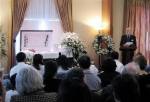
Burial Service
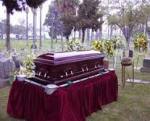
In many instances, the burial service will immediately follow the funeral service. The funeral procession will travel from the site of the memorial service to the burial site. If the deceased served in the Armed forces, military rites will often be accorded at the burial site.
According to most religions, the casket remains closed during the burial ceremony. A final prayer may be said and the deceased is placed into the burial area or prepared for cremation. Morticians will typically ensure that all jewelry worn by the deceased are in the casket before it is buried or entombed. If the body is to be cremated, these items may remain or be removed prior to the process. Any pacemakers must be removed prior to cremation as they could explode and cause damage to the crematorium.
In many traditions, a meal or other gathering follows the burial service. This gathering may be held at a church or in the home of the deceased or other family member.
Private Services
In some instances, families may choose to have a small service in lieu of the larger traditional type funeral service. They reasons may vary, and in some cases, they may schedule a public memorial service at a later time.
To read more indepth information about US and Canadian death and funeral customs, you can go here.
Other Death and Funeral Customs
- Green Funerals
- Scottish Funerals
- African Funerals
- New Orleans Jazz Funeral
- East Asian Funerals
- Ancient Funerals
- Viking Funerals
- Online Funeral Services
"Green" Funerals
Many people who are concerned about the effects a burial or cremation has on the environment, are preplanning their funerals to be buried in a more ecofriendly fashion. Using a coffin made of cardboard or other easily-biodegradable materials, in addition to choosing to be buried in a park or woodland as their final resting place are some of the decisions they are making. Some people also request the planting of a tree over their grave as both a contribution to the environment and as well as a gift of remembrance. Learn how you can also take steps to preplan your own or a loved ones funeral so that your wishes can be carried out in time of need.
Scottish Funerals
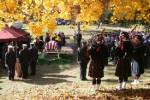
African Funerals

Source: Funeral

New Orleans Jazz Funeral
East Asian Funerals
Ancient Funerals
Viking Funerals
Online Funeral Services
Military Funerals
| Funeral Guide | Find a Funeral Home | Send Flowers |